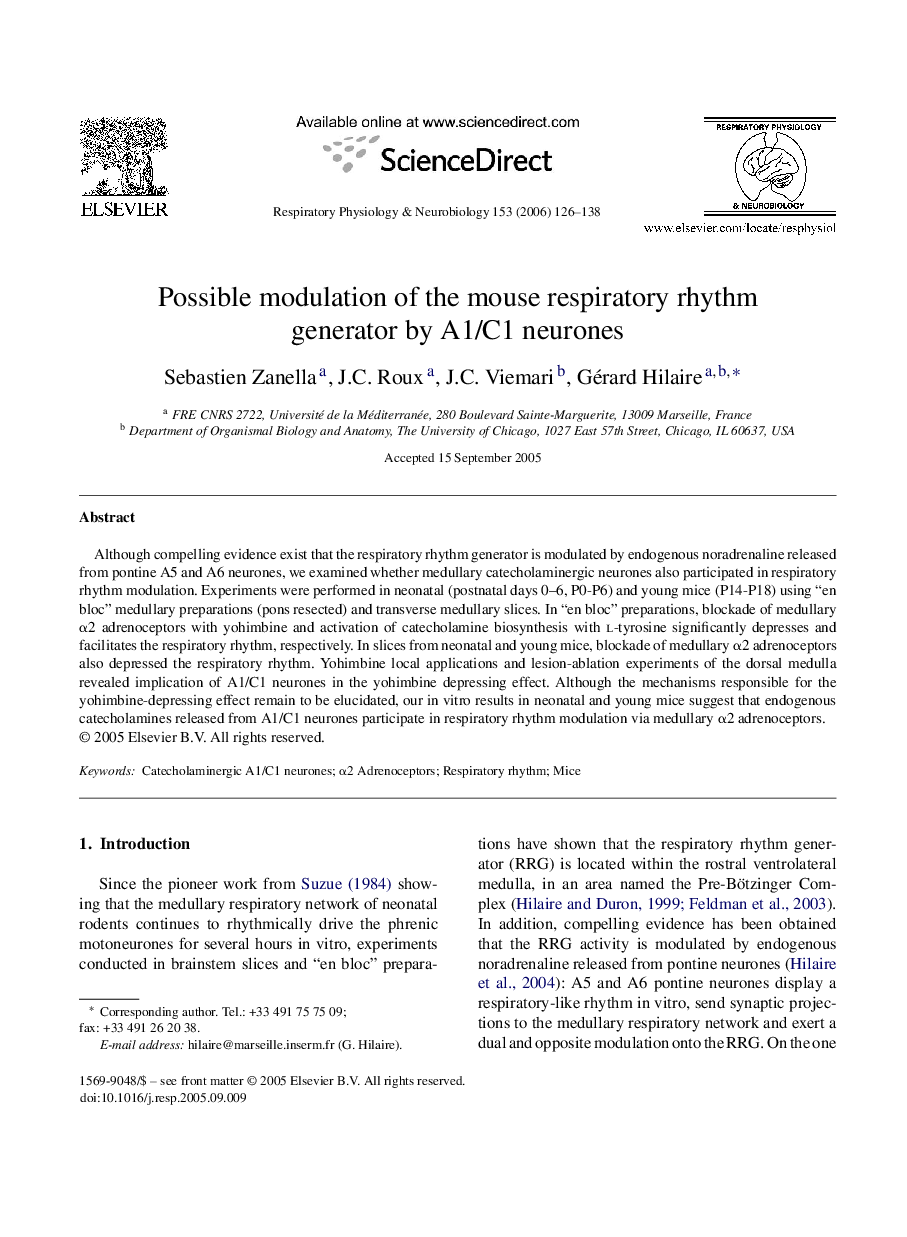| Article ID | Journal | Published Year | Pages | File Type |
|---|---|---|---|---|
| 2848653 | Respiratory Physiology & Neurobiology | 2006 | 13 Pages |
Although compelling evidence exist that the respiratory rhythm generator is modulated by endogenous noradrenaline released from pontine A5 and A6 neurones, we examined whether medullary catecholaminergic neurones also participated in respiratory rhythm modulation. Experiments were performed in neonatal (postnatal days 0–6, P0-P6) and young mice (P14-P18) using “en bloc” medullary preparations (pons resected) and transverse medullary slices. In “en bloc” preparations, blockade of medullary α2 adrenoceptors with yohimbine and activation of catecholamine biosynthesis with l-tyrosine significantly depresses and facilitates the respiratory rhythm, respectively. In slices from neonatal and young mice, blockade of medullary α2 adrenoceptors also depressed the respiratory rhythm. Yohimbine local applications and lesion-ablation experiments of the dorsal medulla revealed implication of A1/C1 neurones in the yohimbine depressing effect. Although the mechanisms responsible for the yohimbine-depressing effect remain to be elucidated, our in vitro results in neonatal and young mice suggest that endogenous catecholamines released from A1/C1 neurones participate in respiratory rhythm modulation via medullary α2 adrenoceptors.
